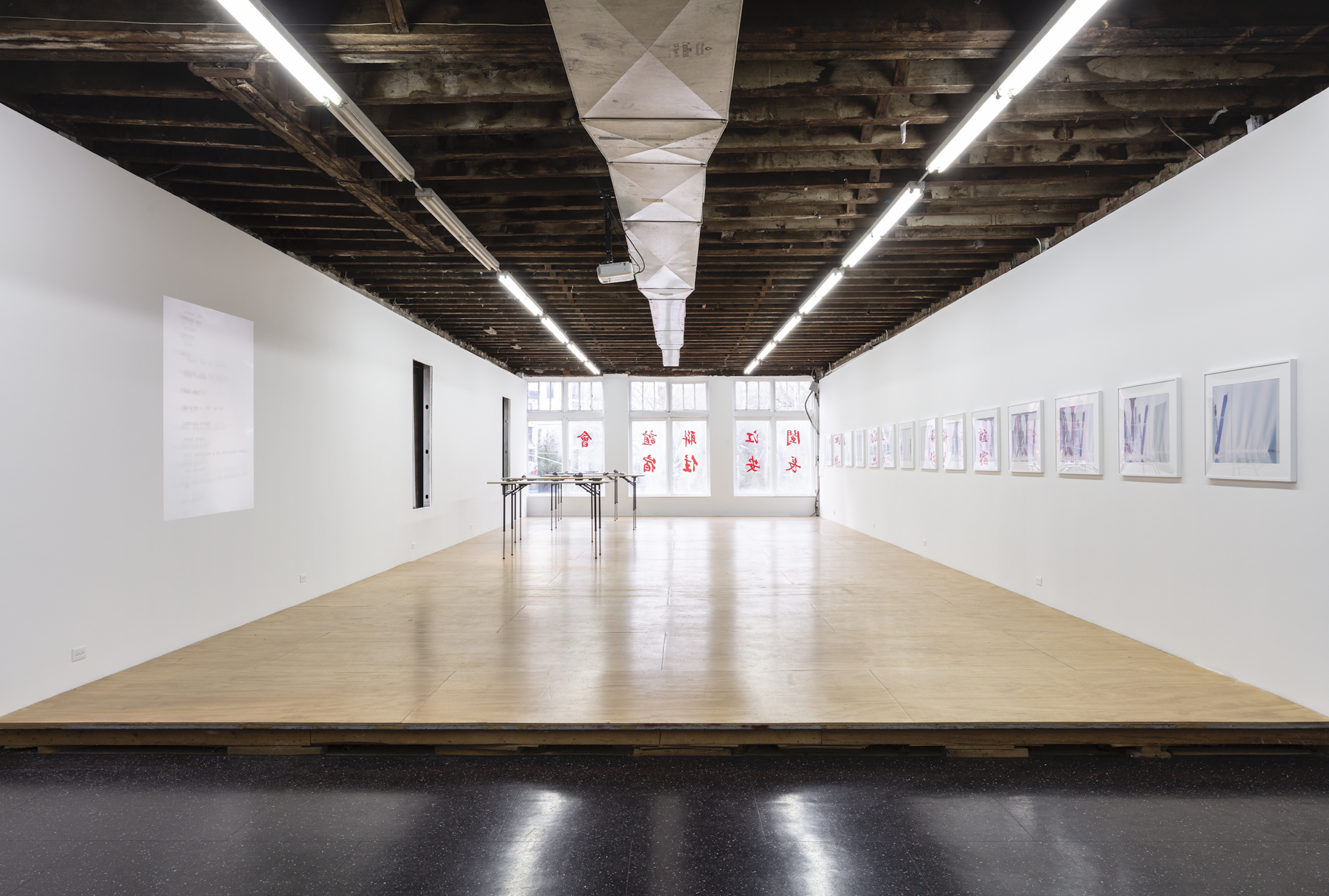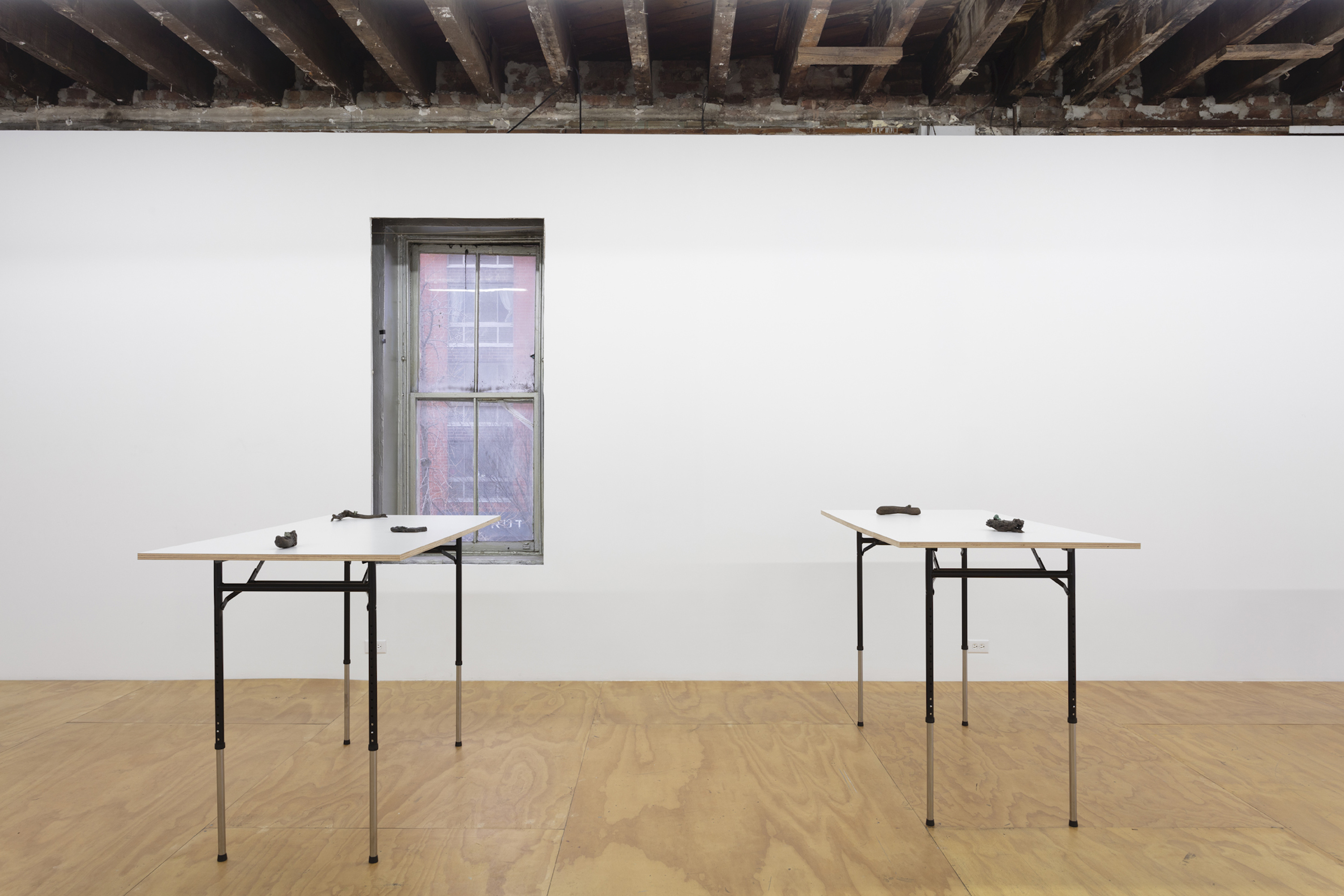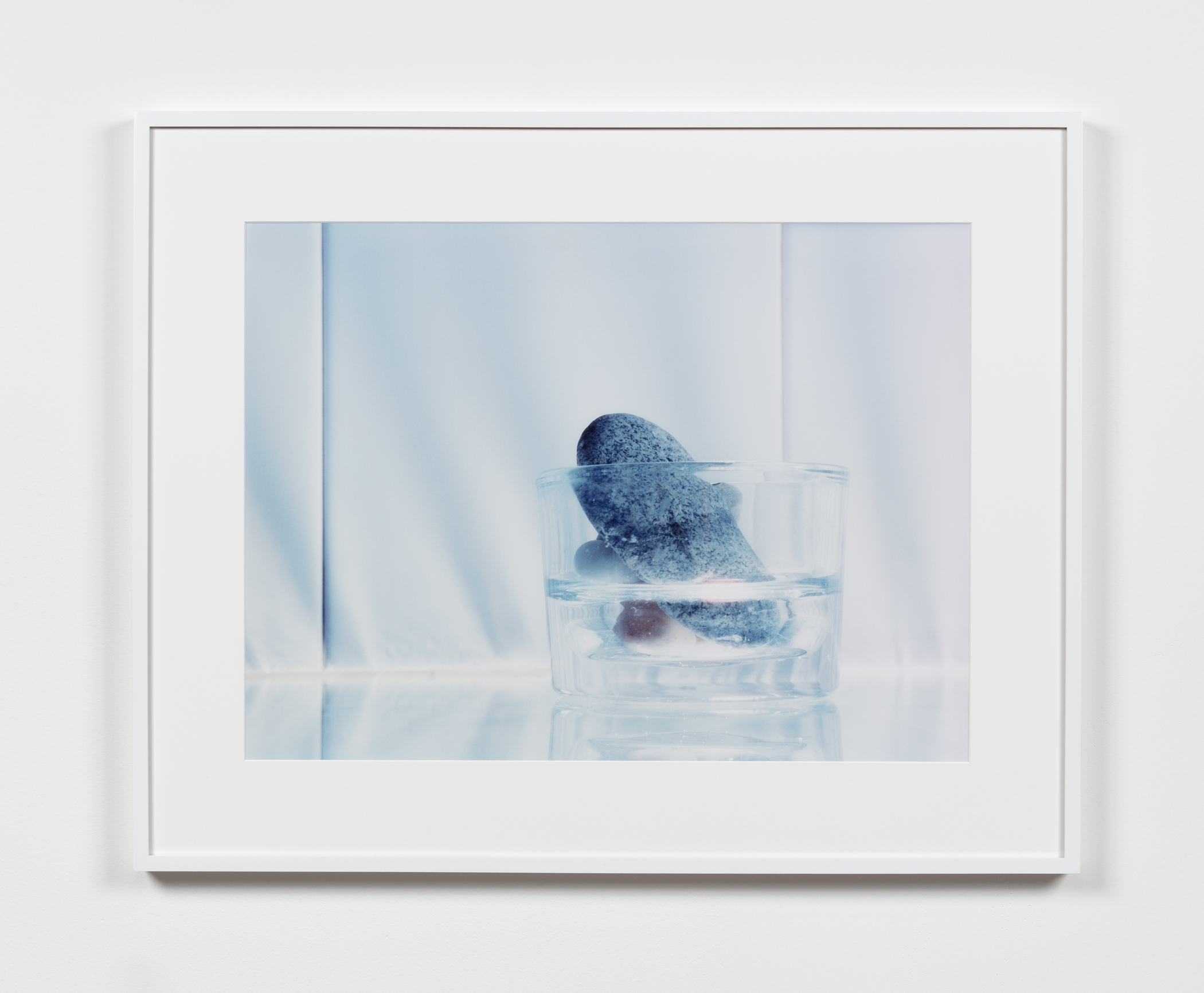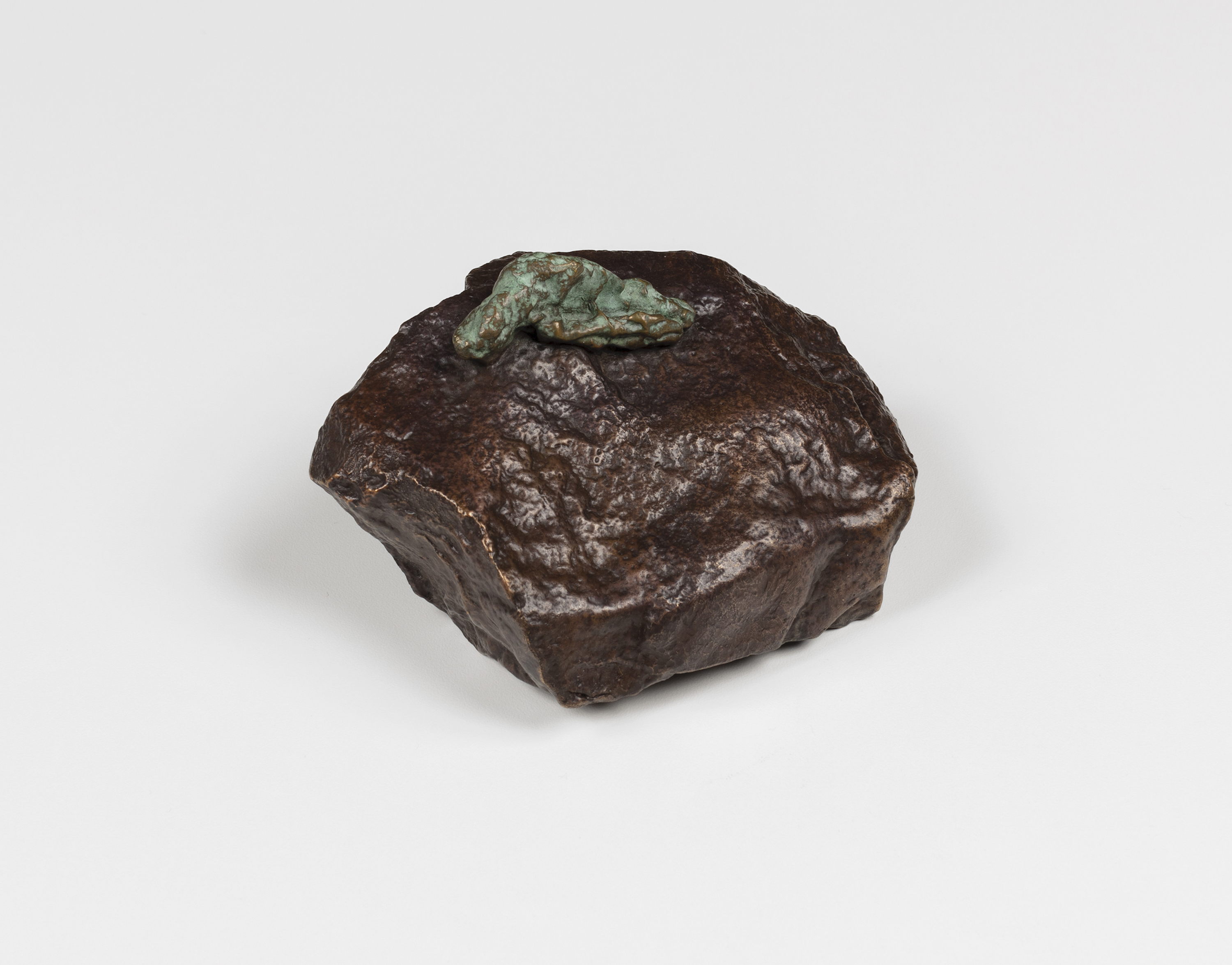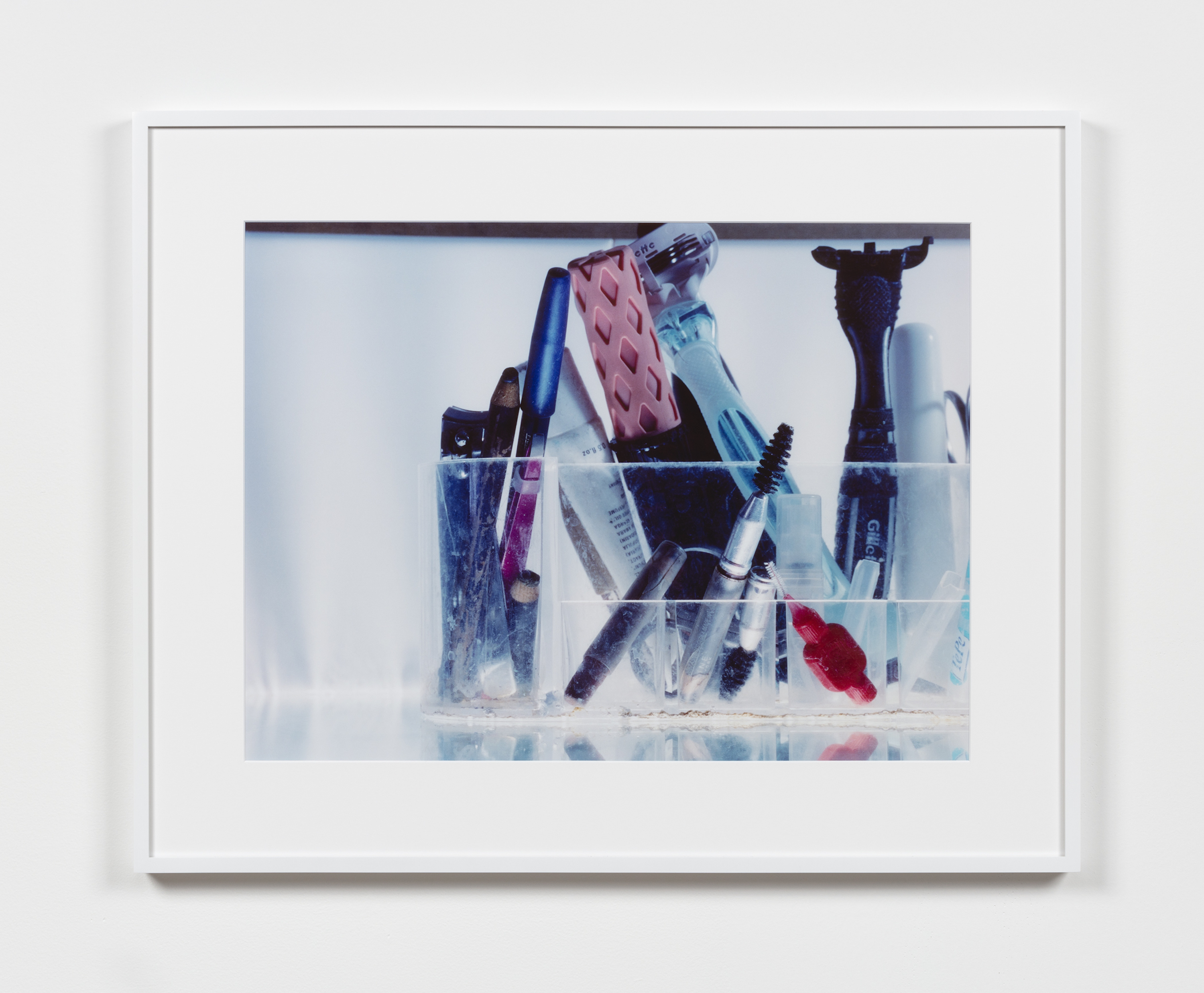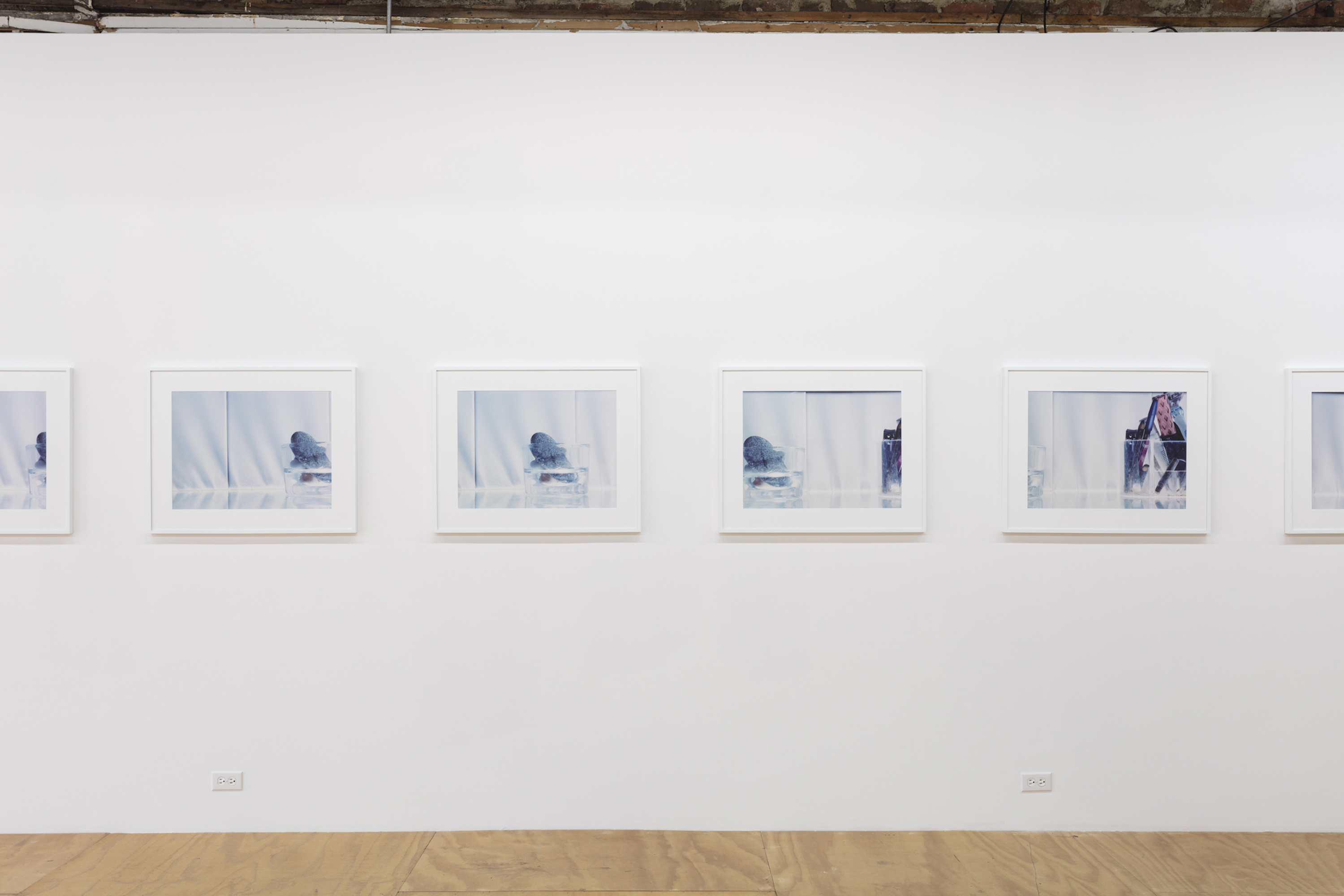April 3–May 8, 2022
Josephine Pryde’s campily titled show at Reena Spaulings frames the genius of Taylor Swift—her capacity for reinvention and the influence of her confessional songwriting—as a model of the creative process. The story goes that sometime in 2019, Pryde, an English artist known for detourning the conventions of commercial photography, came down with a stomach bug: she spent her convalescence listening repeatedly to Swift’s album Lover, released that same year. In the months since, she produced a series of twelve bronzes by chewing on a piece of gum while remembering a different track, matching her chews to the rhythm of each song in a kind of masticatory lip-sync. She stuck each resulting wad to one of the pieces of driftwood or small rocks scattered around her flat, cast the assemblages in bronze, and patinated the gum part a scaly green. Hannah Wilke, eat your heart out.
Pryde’s goal seems not to relive or remember her illness so much as transpose it into the key of Taylor’s heartbreak. Each piece is titled after the song in Pryde’s head while she made it: “The Archer”; “Paper Rings”; “Miss Americana & The Heartbreak Prince.”1 The suggestion is that the tenor of each song affected the artist’s chewing, making the tooth-marked wads like the webs spiders weave on different drugs. If any such resonance exists, it escapes me. The show is full of moments where the artist asserts her vision, justifying the work with internal logic: I was laid out with a stomach bug, therefore I had to listen to something—and, having listened, I had to chew something… But the sequence of events seems confected, a satire of artistic compulsion: less the result of a flu than a finger down the throat.
The second body of work (“The Tiled Shelf Ran the Length of the Bathroom,” 2021/22) comprises twelve photos of a mirrored shelf—a formalized response to Pryde supposedly passing by it on the way to vomit. She removed the fixture from her bathroom and reinstalled it in her photography studio, along with two of the vessels it held—a glass of pebbles and an acrylic organizer crammed with makeup. The framed photos of the abstracted shelf cover one end of the gallery to the other in short increments, left to right, like a cinematic tracking shot, so that the glass of stones appears in five of the images but is only centered in one. The rightmost two pictures run off the wall, obeying the parameters of the series itself—the necessity to complete the tracking shot down the length of the shelf—rather than that of the gallery’s buildout.
Both bodies of work are extrapolations, almost remixes, of Pryde’s internal pain—or at least her performance of it—routed through the formal procedures of sculpture and photography. The results are intimate, not unlike a pail of bile. We’re seeing, on the one hand, casts of gum that has literally been inside the artist’s body; on the other, detailed, lush photos of the knick-knacks in the artist’s bathroom, cruddy corners and stray mascara brushes and all. The series are visually divergent, and yet linked by their fidelity to the artist’s index.
But fidelity is a problematic story. A pale, drifting projection on the wall displays a list of song and/or work titles; the checklist and press release sit on one of the tables holding the bronzes. The artist’s eagerness to explain the works’ origins circumscribes the narratives the finished objects might tell. This seems to be Pryde’s sideways point. Without the backstory, it would be a very different show—a transmutation of organic forms into industrial metals, a sultry dwelling on the grime of consumer routine, a meditation on collecting. With it, the show might be read as self-reflexively rattling the armature by which an exhibition comes into being: the shelf was on the wall, the branches were on the tree, the gum was in the mouth, and the ideas were in the artist. All this metatext prompts a gut check for how much we care about the art on its own terms, like hearing Taylor’s songs without knowing who she is.
There are eighteen tracks on Lover, but only twelve casts on view. Which ones did Pryde omit? “I Think He Knows”; “Death by A Thousand Cuts”; “False God”; “You Need to Calm Down”; “Afterglow”; “It’s Nice To Have A Friend.” I’ll leave it to Swift scholars to suss out the significance here.
